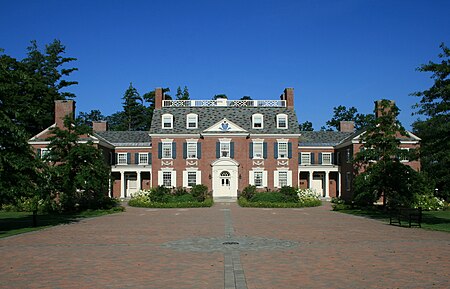Holderness School
1879 establishments in New HampshireAccuracy disputes from June 2022All accuracy disputesBoarding schools in New HampshireEducational institutions established in 1879 ... and 4 more
Holderness, New HampshirePreparatory schools in New HampshirePrivate high schools in New HampshireSchools in Grafton County, New Hampshire

The Holderness School is a private, coeducational college-preparatory school in Holderness, near Plymouth, New Hampshire in the United States. The student body of 300 is drawn from 22 U.S. states and 14 foreign countries. While Holderness operates primarily as a boarding school, it also enrolls 25 day students. John McVeigh is currently Holderness School's 10th Head of School (headmaster). McVeigh's predecessor was R. Phillip Peck, M.Ed. In the summer the campus is used as a site for various Gordon Research Conferences.
Excerpt from the Wikipedia article Holderness School (License: CC BY-SA 3.0, Authors, Images).Holderness School
Styles Bridges Highway,
Geographical coordinates (GPS) Address Nearby Places Show on map
Geographical coordinates (GPS)
| Latitude | Longitude |
|---|---|
| N 43.758888888889 ° | E -71.674444444444 ° |
Address
Styles Bridges Highway
03264
New Hampshire, United States
Open on Google Maps








